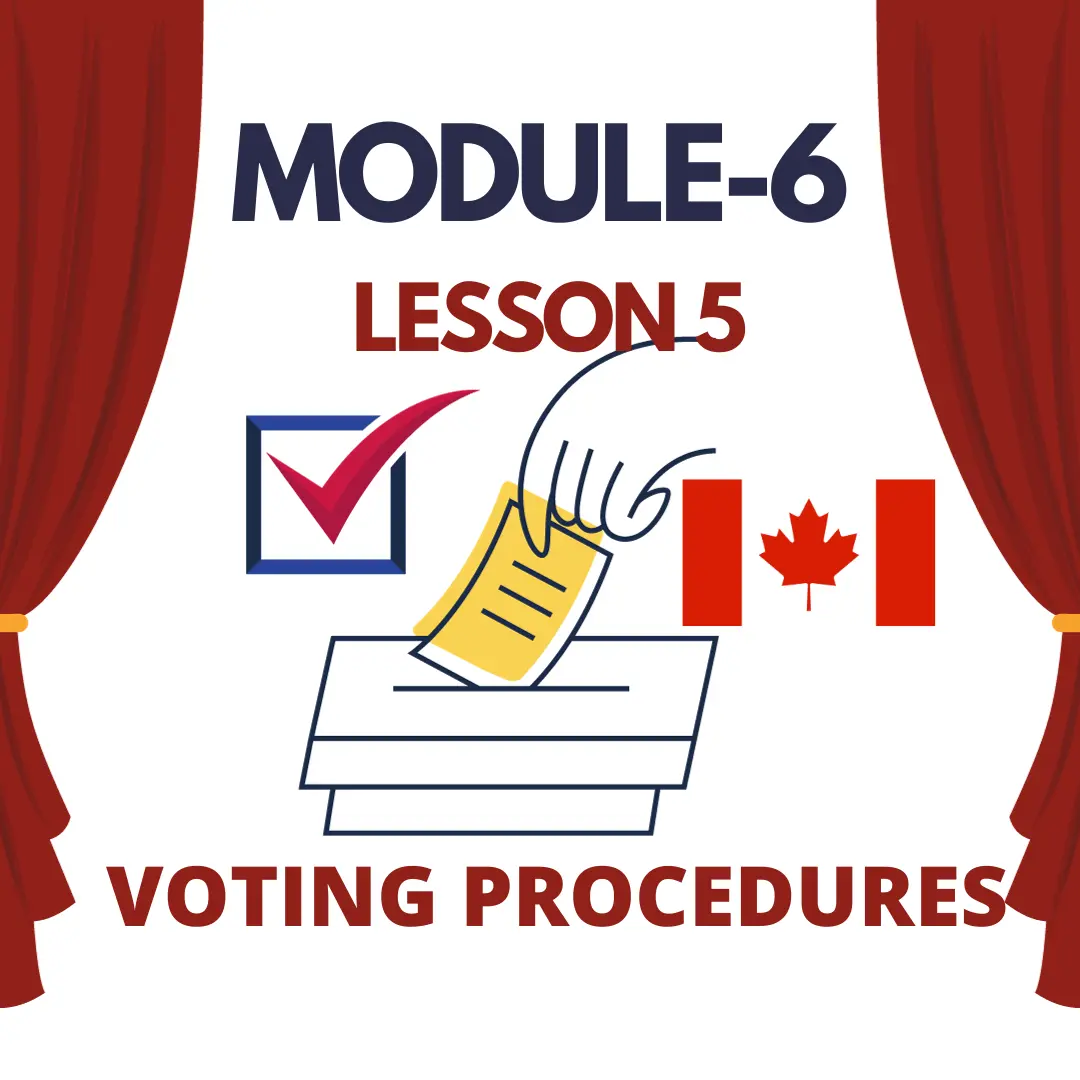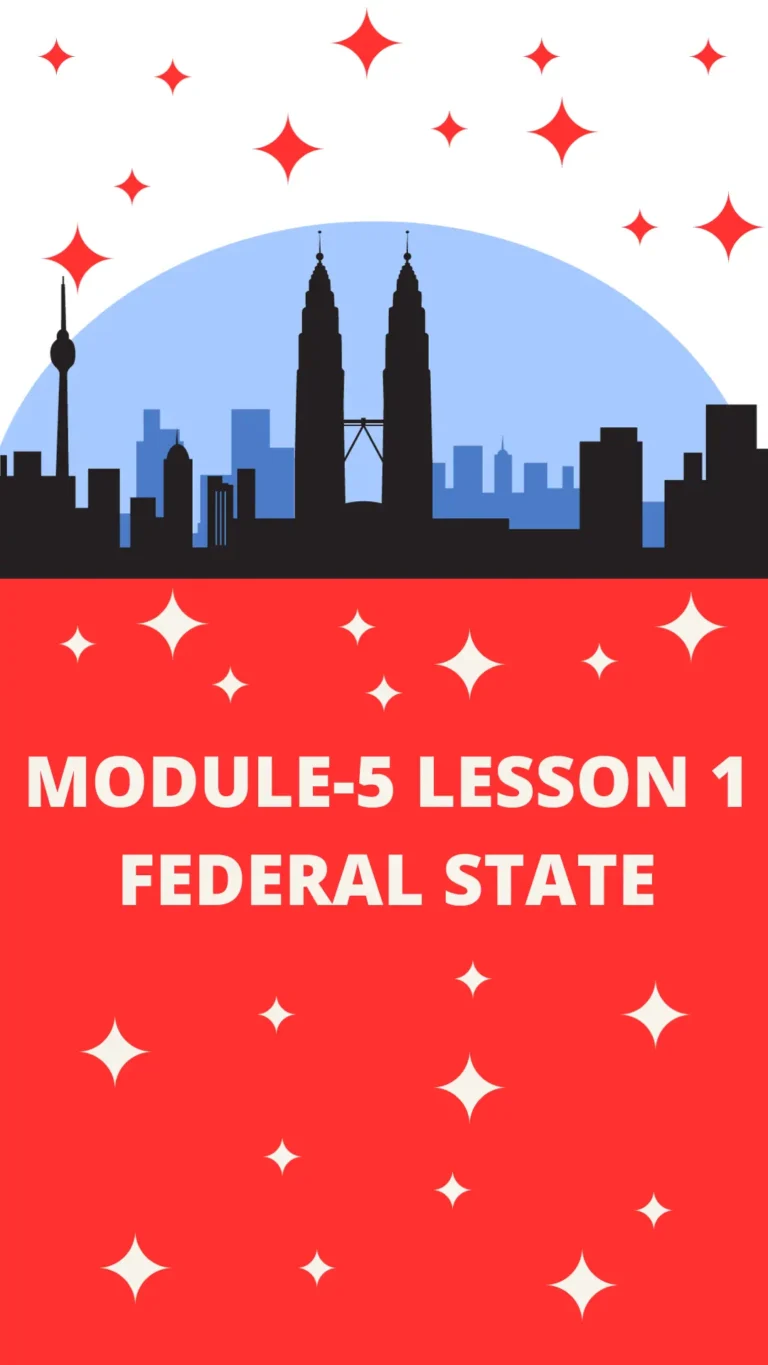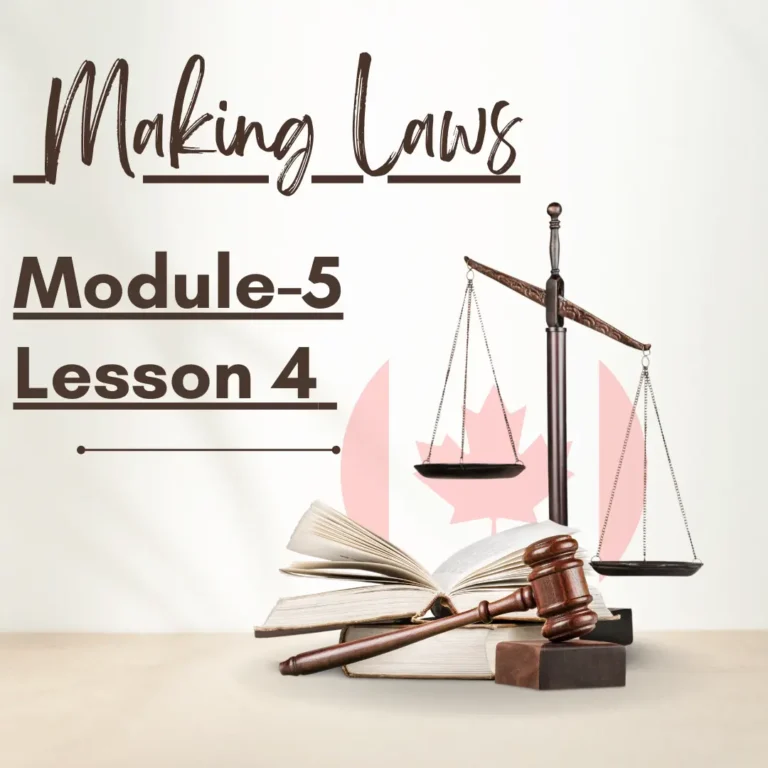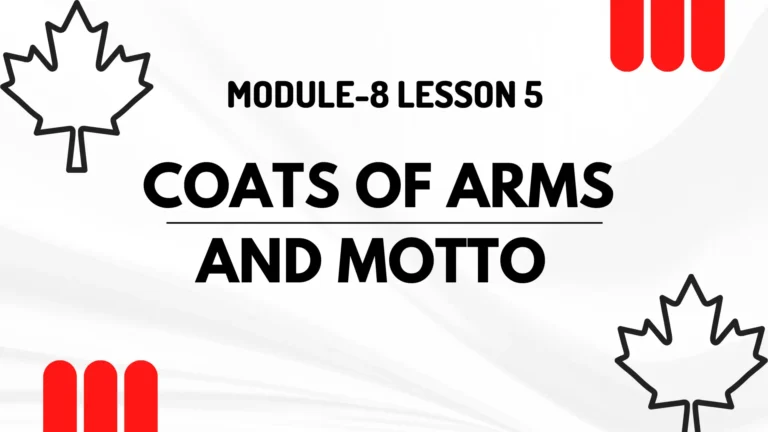Module-6 Lesson 5 VOTING PROCEDURES
The backbone of every democratic nation is its election and voting procedures. They provide a transparent and structured process that allows citizens to select their elected representatives. Election procedures in Canada are designed with fairness, inclusivity, and accessibility as the main principles. The intricacies surrounding election procedures are examined in this essay.
1. Electoral System:
a. First Past the Post:
Canada uses the First Past the Post system for federal elections, in which each electoral district elects a Member of Parliament. A candidate who receives the highest number of votes wins a seat. The critics claim that FPTP may lead to a disproportional distribution of seats, as parties win a large share of popular votes but fewer.
b. proportional representation (PR):
While FPTP remains the dominant system in Canada, certain provinces or territories have experimented with proportional representation. The PR system aims to make sure that seats are distributed in the legislature according to the percentage of votes received by each party, potentially alleviating concerns over representation.
2. Election Timeline:
a. Fixed Election Date:
The federal election in Canada are not schedule set by law. However, it has become a custom to hold them every four years. The Prime Minister may request that the Governor-General dissolve the Parliament to call for an election prior to the expiration of the four-year term. To increase transparency and certainty in the election process, fixed dates for elections were established.
b. Campaign Period:
Typically, the campaigning period before an election lasts several weeks. Political parties and candidates will be actively campaigning during this period, which includes rallies, discussions, and outreach. This period is a time of intense political debate, which allows citizens to make well-informed decisions.
c. Advance Polls:
In order to improve accessibility, advanced polling is held throughout the election campaign. Voters who are eligible can vote at polling places designated before the election. It is a convenient option for those who are unable to cast their ballots on election day because of work, travel or other obligations.
3. Voter Eligibility:
a. Age Requirement:
In order to be eligible to vote in the federal election in Canada, you must be 18 or older on the day of your vote. The age limit is set to ensure that voters are able to make an informed decision about Canada’s political future.
b. Citizenship Requirement:
In federal elections, only Canadian citizens can vote. The requirement highlights the link between citizenship and voting, highlighting the significance of the democratic process.
c. Registration:
Individuals must register on the voter’s list in order to vote. You can register in advance or at the voting station on election day. Registration ensures all eligible voters have a chance to exercise their rights as democratic citizens.
d. Residency Requirement:
Residents of the district in which they plan to vote are required. The electoral process is tied to the local level, which aligns the needs of the voters with the concerns of the communities.
4. Voting Procedure:
a. Polling Stations:
Election day is the time when eligible voters visit designated voting stations within their district. The stations have been set up in order to ensure a smooth, organized voting process. Special measures have been put in place for voters in remote or disabled areas, in addition to the physical polling station.
b. Voting Methods:
The ballot is secret vote given by voter, ensuring the privacy of the vote. All citizens can easily access the voting system due to its simplicity. Some provinces have adopted electronic voting systems to improve efficiency and accuracy.
c. Special ballots:
Individuals who are unable to vote personally due to a variety of reasons, such as being out-of-district or disabled, can use special ballots. Voters can participate in democracy by using special ballots. They are available via mail and at certain locations.
5. Role of political parties:
a. Nomination Process:
The role of political parties in the electoral system is crucial. Parties select the candidates who will run for each ward in an election. Parties choose their candidates through party internal mechanisms such as conventions or local meetings.
b. Party Platforms:
Political parties outline their policies, their values and their vision of the country on their platform during the election campaign. The party platforms are used to help voters make informed decisions based on their alignment with the values of the parties.
c. Campaigning:
Candidates and political parties engage in intensive campaigning for the purpose of reaching out to voters. The campaigning includes door-to-door canvassing and advertisements, as well as participation in debates. The campaign allows the parties to express their views and convince voters to vote for their candidate.
d. Election Night:
As the polls close on election night, attention turns to the counting of votes and the announcement of the results. The leader of the party that has the majority of seats in the House of Commons becomes Prime Minister. Opposition parties are crucial in holding the government accountable through questions, debates and scrutiny of policies.
6. Post-Election Procedures:
a. Government Formation:
The Governor General invites the party or coalition with the majority of seats to form a government. A party that wins a majority can form a government on its own. If a party is in a minority, it must work with other parties to get enough votes to pass laws.
b. Transition and Inauguration :
In the transition period, the new government prepares to take office by appointing ministers in their cabinet and defining its policy priorities. Inauguration of Prime Minister marks the beginning of the term for the new government.
c. Parliamentary Sessions:
The newly-elected Parliament holds sessions in which the legislation is discussed, examined, and approved. Through question and answer sessions, debates, and committee work, the opposition is able to hold government officials accountable. The cycle of the parliament continues until the election.

Conclusion about voting procedure:
The Canadian election procedures reflect the commitment of Canada to democracy, transparency and inclusion. The election process in Canada is based on democratic principles, transparency and inclusivity. The ongoing assessment and refinement is crucial as Canada evolves to meet the changing expectations of a more informed and engaged citizenry, new demographics and technological advances. Canada’s democratic system is dynamic and ever-changing. The procedures that are in place ensure the voice of citizens remains central to the country’s governance.





